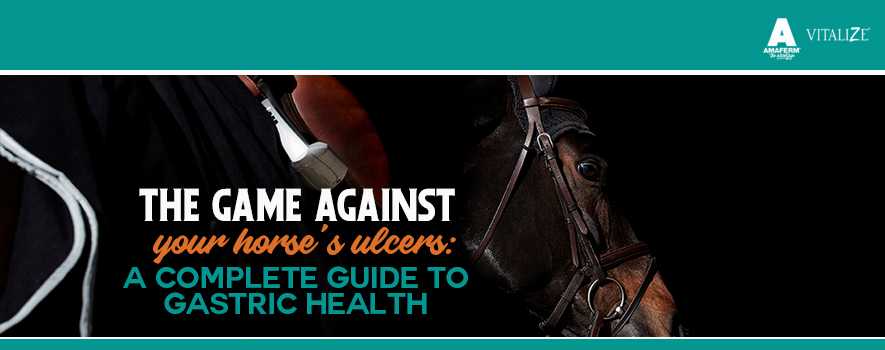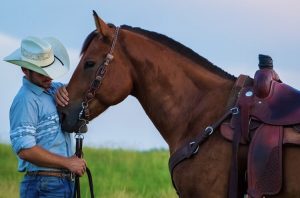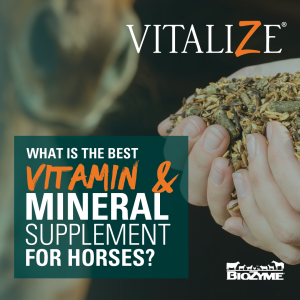
Gastric health is achieved when the stomach is free of disease and discomfort. Unfortunately, in performance horses the incidence of gastric discomfort is high. The horse’s stomach continuously secretes hydrochloric acid throughout the day and night, regardless if feed has been ingested. High acid in the stomach, especially in an empty stomach, predisposes the horse to gastric ulcers. Equine gastric ulcer syndrome (EGUS) is commonly diagnosed amongst competition horses. In fact, some studies have determined the presence of ulcers to be in up to 90% of competition horses. These ulcers can cause poor body condition, initiate bad behavior and reduce performance. Furthermore, they can result in other digestive upset such as acute colic and diarrhea.
There are two common types of gastric ulcers in horses: squamous and glandular. The first third of the stomach is the squamous region, whereas the last two-thirds is glandular. Squamous ulcerations generally occur as a direct result of ongoing exposure to stomach acid. These ulcers tend to form quickly, and they are often associated with high starch diets, lack of ample forage, intense exercise, and stress. Glandular ulcerations generally occur when the protective mucus layer that the glands produce is compromised. These ulcers develop slowly, and the exact causes are less well understood. Glandular ulcers are also more difficult to resolve than squamous ulcers.
Gastric ulcers can be diagnosed and graded based on endoscopy (also known as “scoping”). Both types of ulcers are graded on a scale of 0 to 4 – with 0 being healthy and 4 being extensive, deep ulcerations. The common risk factors for gastric ulcers include lack of turnout/grazing, inadequate forage intake, prolonged use of NSAIDs, travel, high starch diets, and elevated exercise. Many of these risk factors go hand-in-hand with performance horses, creating the perfect storm for ulcers. In fact, a research study in 2011 showed the prevalence of squamous ulcers in horses during the competition season was 93%, but in the off-season the prevalence of ulcers in the same horses dropped to only 48%.
If your horse is at risk for gastric ulcers, watch for the warning signs of ulcers, including reduced performance, poor appetite, girthiness, behavior changes, weight loss and poor coat condition. Any of these may indicate ulcers are present, which can be confirmed via endoscopy. You can also work to help prevent ulcers by trying to minimize factors that contribute to the problem. For example, providing ample turnout and plenty of forage, incorporating more frequent meals, and providing very clean, fresh water will help the stomach stay healthy. Maintaining a good gut health program with products like Vitalize® is also paramount. In fact, while all Vitalize products benefit gastric and gut health, Vitalize® Alimend® is specifically formulated to combat gastric discomfort and restore gastric health in performance horses.
Vitalize Alimend is a natural product that supports the gastric health of the horse. It’s main ingredient, MHB3® Hyaluronan, has been shown to prevent and aid in gastric ulcers in horses. Alimend is unique to other products because it does not change the pH level of the stomach, nor does it prevent acid secretion, so digestion is not negatively impacted. This decreases the chance of colic while simultaneously keeping “a good gut feeling.”
Whether you have a Grand Prix jumper or a D1 barrel horse, Vitalize Alimend can help improve gastric health.

